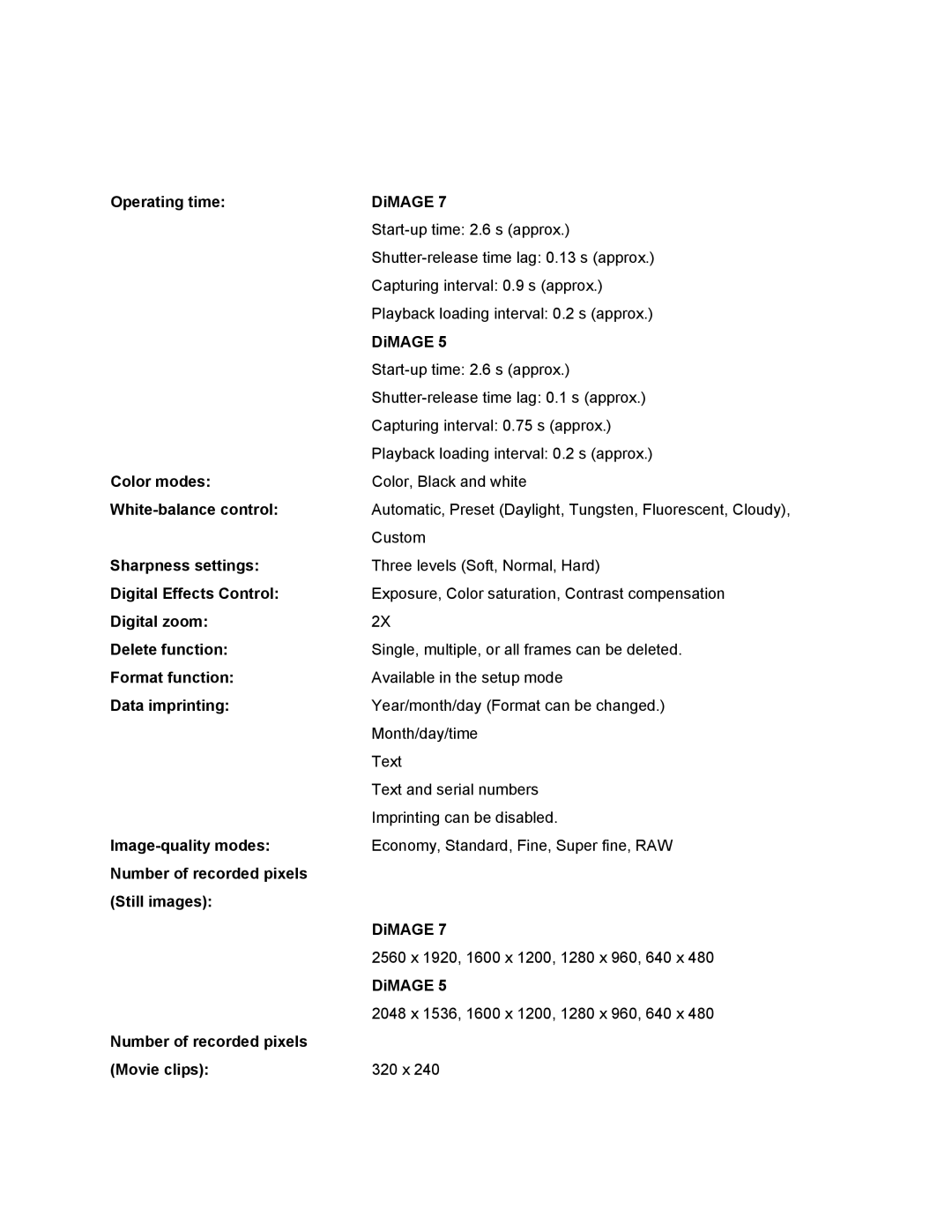5 specifications
The Konica Minolta 5, commonly referred to as the DiMAGE 5, was a revolutionary digital camera that played a key role in the evolution of compact digital photography. Released in the early 2000s, it combined an innovative design with advanced features that appealed to both amateur and professional photographers alike.One of the standout characteristics of the Konica Minolta 5 was its impressive image quality, largely attributed to its 5-megapixel sensor. This sensor allowed for sharp and vibrant images, capturing fine details with remarkable clarity. The camera was equipped with a 7x optical zoom lens, which offered excellent versatility, allowing users to photograph a range of subjects from wide landscapes to distant wildlife. The optical zoom capability was complemented by a digital zoom feature, providing the flexibility to crop images in-camera without losing too much quality.
The DiMAGE 5 also incorporated advanced image stabilization technology, known as Anti-Shake. This feature reduced the impact of camera shake, which was beneficial for capturing sharp images in low-light situations or at slower shutter speeds. This technology gave the camera an edge in delivering clear and stable shots, an often challenging aspect of photography.
Another impressive aspect of the Konica Minolta 5 was its user-friendly interface. The camera featured a large, easy-to-read LCD screen that allowed photographers to compose and review their images effortlessly. It also provided various shooting modes, including auto, manual, and scene modes, catering to users with different skill levels and preferences.
Additionally, the DiMAGE 5 offered a host of connectivity options, including USB ports for easy image transfer to computers and televisions. The camera utilized CompactFlash memory cards, which were widely available and contributed to its storage capacity for images.
Overall, the Konica Minolta 5 was a hallmark of its time, representing a blend of cutting-edge technology and practical design. Its durable build, coupled with features geared towards enhancing the photographic experience, made it a popular choice in the digital camera market. As a precursor to modern digital cameras, the DiMAGE 5 left a lasting impact on the industry, showcasing what compact photography could achieve.
